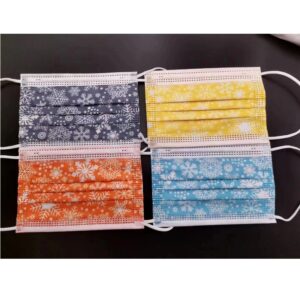Here are some tips to ensure you’re purchasing high quality spunlace non-woven fabric:
Check the basis weight.
The higher the basis weight, the thicker and heavier the fabric will be. Basis weights for spunlace range from 15-200 grams per square meter (gsm). Choose a weight suitable for your intended use. Higher weights tend to be stronger and more durable.
Consider the fiber material.
Polyester and polypropylene fibers are common and economical, but polyester spunlace may be stronger and more durable. Consider fiber tenacity and durability relative to your needs.
Look at the density and porosity.
More dense, higher-loft fabrics with smaller pores tend to be stronger, more absorbent and better at microfiltration. Check specifications on pore size, permeability and absorbency relative to your requirements.

Ensure good bond strength.
Spunlace fabrics get their strength from bonds between hot-melted microfibers. Stronger, more uniform bonds throughout the fabric will produce a higher quality, longer-lasting product. Check for any signs of delamination or weak, uneven bonding.
Examine uniformity.
Higher quality spunlace will have a consistent fiber distribution, density, thickness, permeability and pattern throughout the roll or package. Lower quality may show visible variations, especially on patterned fabrics. Uniformity indicates tighter process control.
Check edge integrity.
The edges of spunlace rolls are most prone to damage, fraying and unwinding. High quality spunlace will have edges that are strongly and evenly bonded to prevent issues. Check that your roll edges remain intact and do not show signs of damage or separation.
Consider customer reviews.
See what other customers say about quality, durability, absorbency, strength and other metrics that are important for your needs. Look for mostly positive reviews mentioning factors like tight, strong bonding; minimal non-uniformity or weak spots; excellent absorbency; strong, long-lasting material; etc. Avoid any with mentions of poor durability, weak bonding or premature damage.
Ask about brand reputation and warranty.
An established, reputable brand that stands by their quality with a solid warranty and return policy will generally indicate higher quality spunlace. Lack of brand reputation or lack of warranty/return policy suggests higher quality uncertainty.
Check certifications (optional).
Some spunlace manufacturers may obtain certifications like ISO 9001 for quality management systems or OEKO-TEX for low chemical emissions. While not required, reputable certifications can provide additional assurance of high and consistent quality standards.